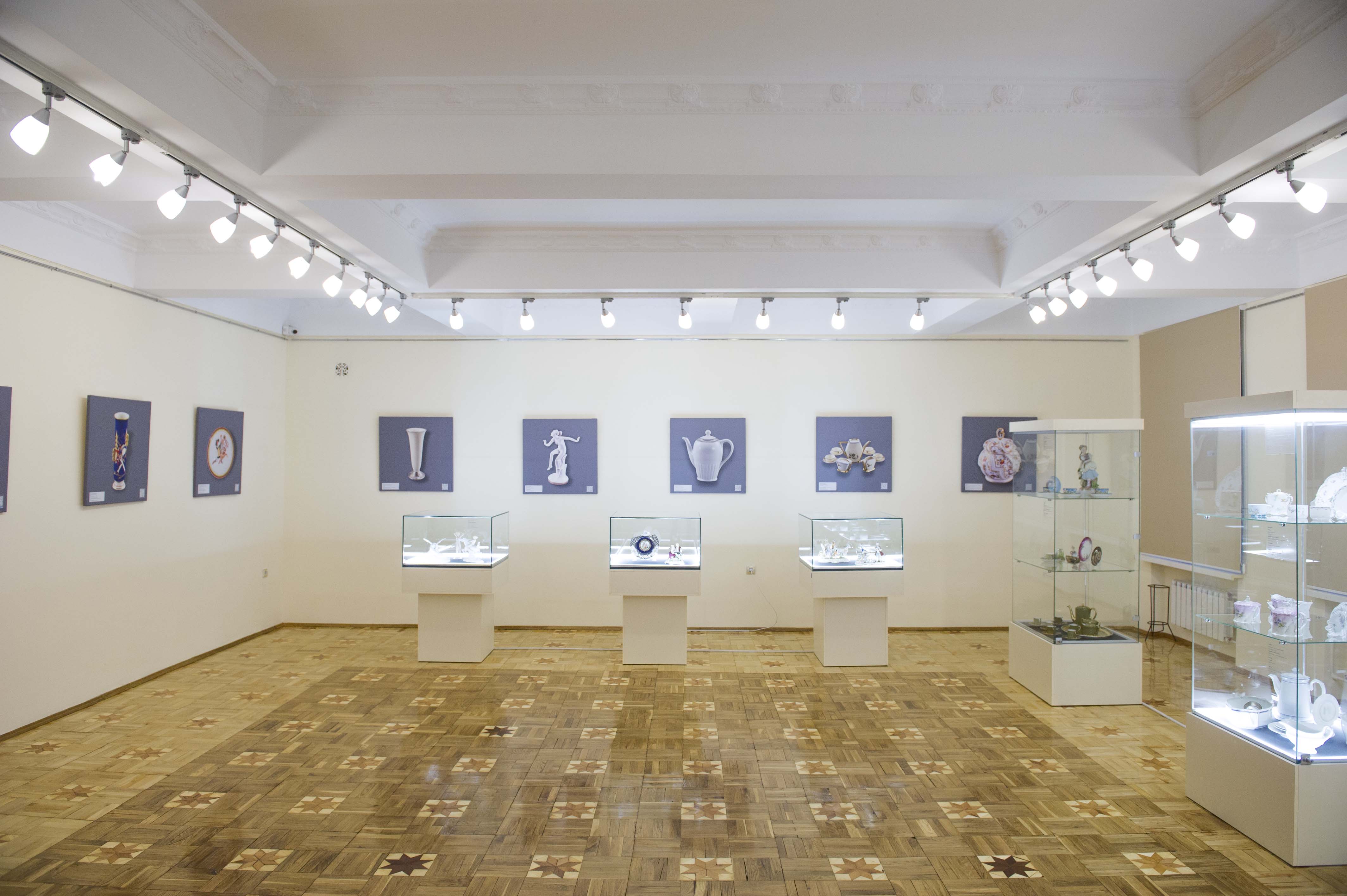
The projects implemented under the Cross-border Cooperation Programme Poland-Belarus-Ukraine 2014-2020 are not just indicators, budgets, reports and payments. Although these are inseparable elements, above all each project hides the specific ideas, values and dreams of people implementing it, as well as the stories of those who benefited from their implementation.
We want to bring some of them closer to you by the "Project stories" – the cycle which presents their more human (but also animal – as in the 1st, 13th and 14th episodes) dimension of our selected projects. We invite you to read!
![]()
The museum smells of wood and antiquity. Like all museums it has solemn, even tense atmosphere. But when the door opens we find ourselves in a Christmas fairy tale – bright, festive, joyful. The inhabitants of this fairy-tale world live in glass showcases – exquisite porcelain figurines and tableware. Lyudmyla Miroshnychenko, the Head of the Ethnography department, guides us through the exhibition organized as part of the SPIDI project and tells about her work at the Volyn Local History Museum.
Lyudmyla has been working at the museum for 21 years, combining this work with teaching at the university. With a degree in history, she plunged into this enigmatic world of old things and human stories behind them. She would like to share them with others, to show how rich is the history and culture of our land… But is a museum capable of attracting visitors in the age of the Internet, smartphones, and constant haste? All these things that were used long ago and have become unfashionable and irrelevant – can they be of any interest for today’s people?
I have my grandmother's embroidered towel at home and my mother's vest, which is a replica of an older one. They are not very old or valuable, but they are important to me. Likewise, many families possess old items of all kinds. It can be, for example, old photo albums, as well as the objects of everyday use, for example, embroidered clothes, Christmas tree decorations... - says Lyudmila.
The new exhibition, organized as part of the project entitled “Borderland Museums — Space for Intercultural Dialogue” (acronym SPIDI), is dedicated to such objects, namely porcelain. There are no highly valuable masterpieces among the exhibits, but each object has a story to tell. In fact, tableware makes an essential part of our everyday life, being a part of our culture, an element of family rituals. This is something everyone can relate to.
Oh, we’ve got the same one at home! – such words can sometimes be heard at the exhibition.
Quite often museum experiences help people to understand the value of their own possessions.
Realizing the value of old things comes with time. How many such items have been thrown out, how many has been irretrievably lost! Lyudmyla is sure that visiting museums helps people to learn something important. And it's not just about hearing about Art Deco style or Rosenthal brand for the first time, or being able to distinguish porcelain from earthenware. Museum objects carry the spirit of past times, recreating certain lifestyle, which was grounded on family rituals, complicated etiquette and its own life philosophy.
But how can museum workers convey their message to visitors? Well, with a help of modern approaches and by using their creativity and imagination, they figured out how to reach different target groups, starting with the youngest ones – preschoolers. For them, "Tea Parties with Alice" are organized (of course, using modern tableware, not museum exhibits). Children learn how to cover the table with a tablecloth, arrange dishes and utensils, put flowers into a vase. Cartoon characters help them to cope with these tasks. But not only children love interactive activities. At the exhibition people can hold special demonstration models of modern porcelain pieces in their hands, see the light glow through the porcelain, feel smoothness and roughness of the surfaces. To help visitors better understand the material, a sample of white clay is on disposal, one can touch it. Visitors enjoy using the stamp in the form of an art nouveau milk jug (one of exhibits) for making impressions as a souvenir of their visit.
The exhibits of Regional Museum in Stalowa Wola, the partner institution from Poland, are printed on canvas. You can hear about their Art Deco porcelain collection by using QR codes. Moreover, porcelain cups and plates became TikTok stars thanks to Katia Matviyuk and Svitlana Chybyrak, the museum's employees.
Another important category of visitors are people with special needs. It can be said that this exhibition has set a certain standard in the field of accessibility – this includes the arrangement of showcases, audio descriptions and tactile models. Lutsk museum workers attended the trainings on the topic of accessibility and they implemented new solutions in this area while preparing the exhibition.
Thanks to our Polish partners, we realized how multifaceted the concept of accessibility is – starting from the words the guide uses to address visitors to special features of a web-site. There is still much to be done in this field, although there have been several initiatives in Lutsk.
...This year was a year of great trial for Ukrainians. It would seem natural that in the conditions of war, people should only care about basic things such as safety, food, shelter. But the truth is, Ukrainians became more aware of their roots, their connection with the past. The news about destroyed cultural monuments and museum collections looted by the Russian aggressor are received with great pain. More often than ever, people bring their possessions to museums in order to preserve them. In this situation, support for such cultural initiatives is invaluable. And, as the project is jointly implemented by partner museums from two countries, some special museum space is created that has no borders or walls and where the past speaks to the present in a language understandable to everyone.
Details of the project can be found here.
Was this page useful?


